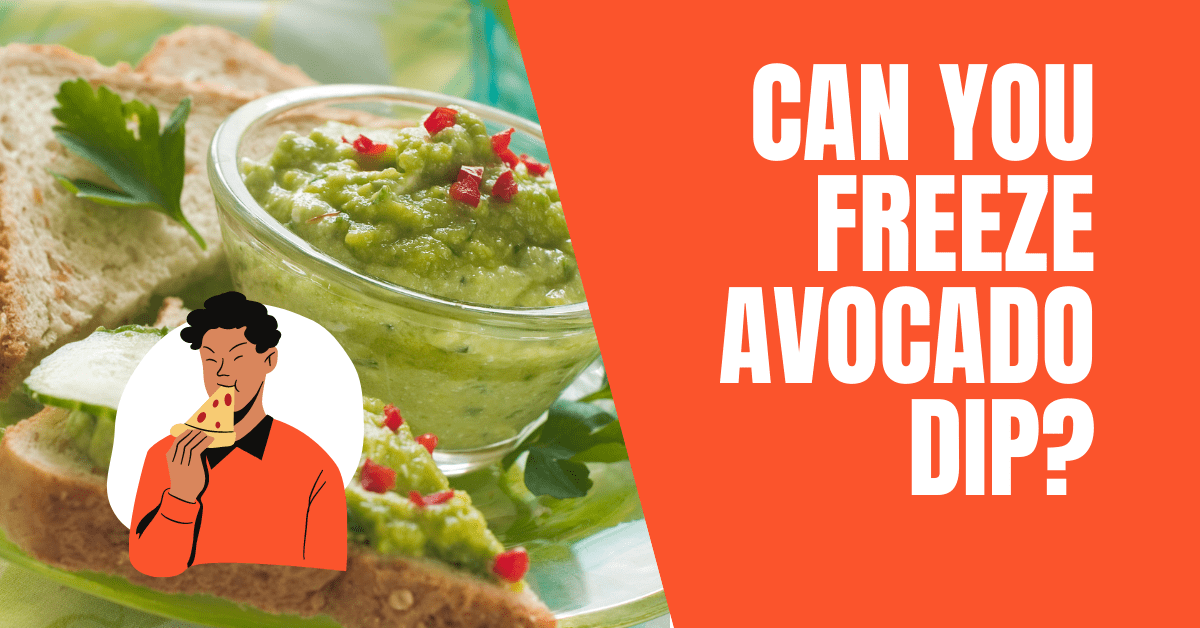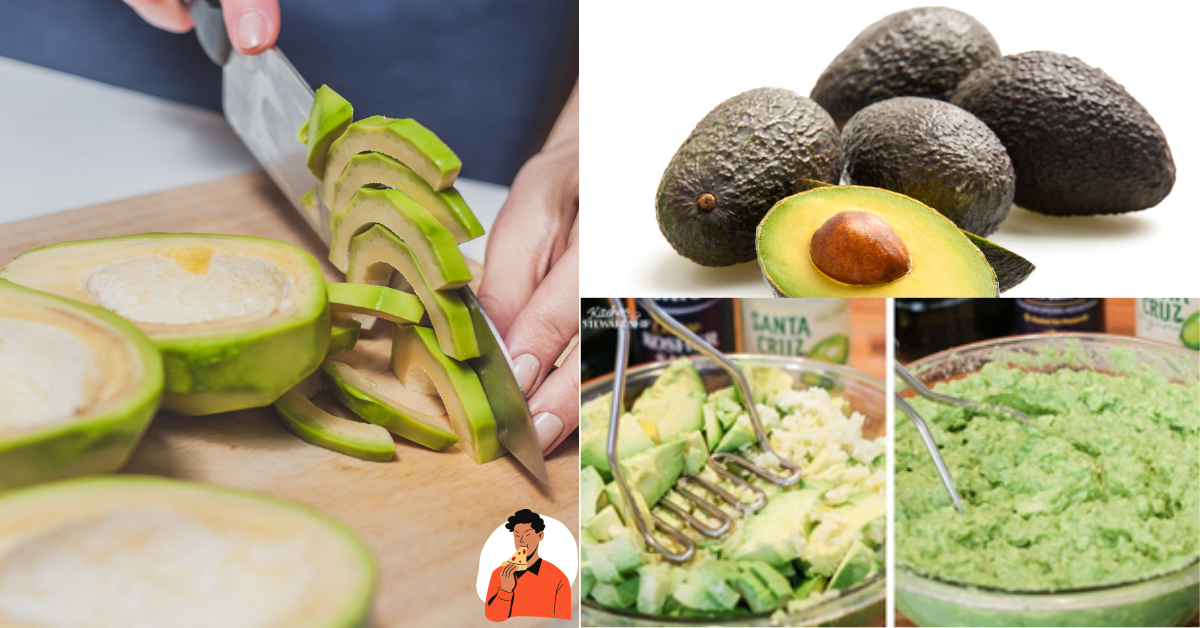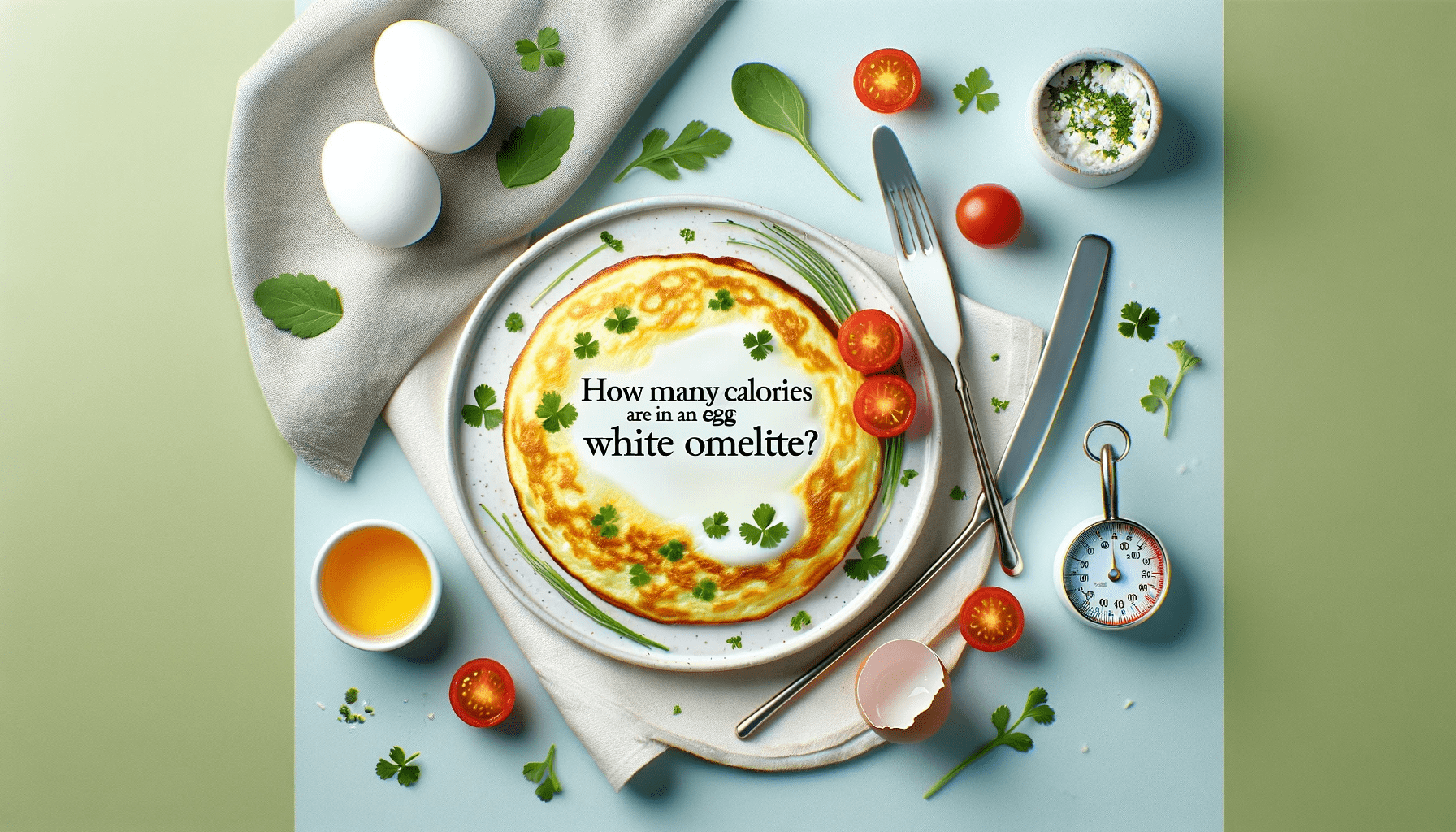Can you Freeze Avocado Dip?

Key Takeaways
1. Avocado dip, like guacamole, can indeed be frozen successfully, providing a convenient way to preserve avocados for later use.
2. Freezing avocados or avocado-based dips allows for longer storage, enabling you to take advantage of sales or abundance during peak seasons.
3. When freezing avocados, it’s essential to prepare them properly. This involves washing, peeling, and either mashing or cutting them into suitable portions before freezing. Adding lemon or lime juice can help prevent browning.
4. While freezing preserves the flavor of avocados, it can alter their texture, making them mushy when thawed. Despite this change, frozen avocados are still suitable for various dishes such as smoothies, dips, and sauces.
Have you ever thought of freezing guacamole for further use when avocados are cheap, plentiful, or in season?
Avocado is a popular and delicious fruit that is enriched with vitamins, healthy fats, and minerals.
The availability of avocados is the best secret to make better impromptu taco nights. With all the powers of the brain, combining it with some vegetables also makes a healthy snack at school.
Avocados are the most liked food item in the whole universe, so freezing guacamole is the best option to store them for later use.
Can you freeze avocados? The answer is yes we can beautifully freeze the avocadoes and store them for more than 3 months.
In this article, we will focus on how to make avocados for freezing along with easy defrosting when the avocadoes are under-ripe, over-ripe, or expensive?
So let’s start.
Can You Freeze Avocado Dip?
- Yes, you can freeze avocado dip, such as guacamole, effectively. Freezing avocado dip allows you to preserve its freshness and flavor for later use. To freeze avocado dip, follow these steps:
- Prepare your avocado dip according to your preferred recipe.
- Transfer the dip into an airtight container, leaving some space at the top to allow for expansion.
- Seal the container tightly and label it with the date of freezing.
- Place the container in the freezer, where it can be stored for up to 3 months.
- When ready to use, thaw the avocado dip in the refrigerator overnight. Stir well before serving, and enjoy!
How to make avocado for freezing?
Avocados can be frozen to help you save both money and time. Below are the steps mentioned on how to make avocado for freezing.
- Wash avocadoes with the skin still present on the fruit.
- Cut into two halves and peel it.
- If you want to keep the avocado in halves, store and freeze them in a Ziploc bag.
- For a puree, the avocadoes are either mashed with a food processor or a fork with a little addition of lemon or lime to minimize browning. Store the puree in a sealed bag and freeze.
The ripe avocadoes can be frozen either in puree or mashed form or cut into chunks or halves and stored for 4-6 months.
Can You Freeze Dry Avocados?
While you can freeze avocados, they are not typically suitable for freeze-drying due to their high fat content and moisture content. Freeze-drying involves removing moisture from foods to preserve them, but avocados may not retain their desired texture and flavor after the freeze-drying process. However, freezing fresh avocados is an excellent way to preserve them for later use in recipes like smoothies or guacamole.
Can you freeze Avocadoes?
Practically, yes, avocadoes can be frozen. For the best long term storage and quality, guacamole can be frozen.
It is the best solution to store a bulk of avocadoes for later use.
The plan of freezing them worked beautifully. The frozen avocado defrosts quickly and has the potential to go out on the table straight from the freezer.
The texture of frozen avocadoes is different from fresh ones however, both have the same flavor.
Frozen avocadoes is better as compared to no avocadoes.
How to make Guacamole for freezing?
Guacamole is a sauce made from a fruit known as the avocado. It is a sauce that uses avocadoes, white onions, tomatoes, chili, cilantro, and peppers.
How to freeze guacamole is our main concern. To start it here is an easy homemade recipe for guacamole.
Guacamole freezes well and the proportions can be adjusted accordingly either less spicy, less garlicky, more lime-y.
Ingredients for freezing
- Avocados 2 large ripe.
- Diced red or yellow onion 1.5tbsp.
- Garlic cloves, chopped 1-2 cloves
- Chili powder 1/4 -1/2 tsp.
- Salt to taste.
After thawing
- Roma chopped tomato 1 medium
Instructions
- Take a bowl and mash avocado and other ingredients other than tomato.
- Adjust the ratio of the ingredients after tasting guacamole, keeping in mind the addition of tomatoes will make the recipe sweeter.
- Take a quart-sized freezer bag and spoon guacamole, press it flat, and remove the extra air as much as possible before sealing.

Instructions
It can be stored for more than 3 months.
To thaw
- Either leave the bag overnight in the fridge.
- Place the bag in a bowl full of Luke warm water.
Mix chopped tomatoes and serve the recipe.
Note
- When you want guacamole for immediate use, just mix the tomatoes with all the other ingredients.
- For freezing purposes, make sure to leave the tomatoes as they will get water and have a bad effect on guacamole once defrosted.
Best Way to Freeze Guacamole
Below I gathered some of the best ways of freezing guacamole in the freezer.
1. Quart-sized Plastic Freezer Bag
If placing a bag inside a jar and roll the sides down, then filling is much easier.
Avoid air bubbles/pockets while scooping the guacamole into the bag.

| PROS | CONS |
| Filling is easy | Not reusable |
| Less spacious and can fit easily in the freezer | Messy |
| Thawing is easy |
2. Wide Mouth Pint-Sized Mason Jars
The jars are filled carefully to avoid air pockets/ bubbles and the top is smoothed out.
Leave at least 1-inch headspace to allow expansion on freezing. The jars with a wide mouth and completely straight sides are used.
To keep the top layer from turning brown pour a thin layer of olive oil.
| PROS | CONS |
| Jars are infinitely reused | Thawing takes time |
| Easy filling | Takes more space as compared to stacked freezer bags. |
Effects of freezing avocados
It is important to consider the effects of freezing on texture, color, nutrient content, and flavor.
1. Texture
Freezing has negative effects on signature, creamy and smooth texture. The fruit expands on freezing and disrupting the structure.
After defrosting, the avocado turns out to be watery, slimy, and mushy.
The unpleasant texture is not liked and can be used in
- Smoothie
- Puree to make guacamole
- Salad dressing
2. Nutrient content
Avocados contain nutrients like fiber and healthy fats along with
- Potassium
- Copper
- Niacin
- Vitamin B6, C, E, and K
Freezing has no direct effect on the fiber, calories, or mineral content of foods however, it has a lower concentration of water-soluble vitamins like vitamin B6 and folate.
There is no exact count of the loss however, some losses are expected to occur especially in long storage.
3. Color
When exposed to oxygen in the air, avocados turn brown. They are often cut into halves or chunks or pureed when frozen resulting in exposure of air during thawing or freezing.
Defrosted avocado may turn brown, so proper preparation and storage methods are important.
Browning is a natural process and does not affect the taste.
How to avoid browning?
- Brush a little amount of vinegar or lemon juice on the flesh before freezing.
- In commercial preparations, citric acid or ascorbic acid is usually added.
How to avoid freezer burn?
- Seal the fruit properly to avoid freezer burn that results in drying and discoloration.
4. Flavor
Though the flavor is not affected directly by freezing, however, some of the methods involved during processing might affect that.
How does the taste change?
- For prevention of browning, vinegar or lemon juice is used that might change the taste.
- Commercial frozen avocados have additives so check the package if the taste is your main concern.
How to thaw and use frozen avocado?
- Take out the avocado from the freezer and defrost it in the fridge or at room temperature. It takes almost 1 hour to thaw at normal temperature.
- Thawed avocados are used for
- Salad dressings
- Smoothies and other dishes, sauces, and dips
- Extra ingredients and seasonings may cover the mushiness and other changes.
Delicious ways to eat an Avocado.
Avocados are added to many recipes for a healthy nutritional boost. It helps to control weight, aid heart health and healthy aging.
The interesting and healthy ways to introduce avocado in your diet are
- On toast
- In scrambled eggs
- Stuffed
- Seasoned
- As a mayo substitute
- Guacamole
- Soups
- Salads
- Sour cream substitute
- In sushi rolls
- Grilled
- Pickled
- As for fries
- In smoothies
- In salad dressing
Conclusion
Avocados can be frozen to avoid food wastage and make the fruit available throughout the year. The flesh tends to become brown and mushy during thawing or storage with the conservation of most of the nutrients. Thus frozen avocados are best for dishes like dips, smoothies, and guacamole.
Frequently Asked Questions
1. How do you store avocado in the freezer?
The entire fruit is washed and dried. Each piece is wrapped tightly with the help of plastic wrap. Each piece is placed in a Ziploc freezer bag and sealed tightly. It can be stored for 3-6 months.
2. Is Frozen Avocado any good?
It was a great inclusion to smoothies. The best palatable way to use thawed frozen avocado is mashing up some lime juice and salt and liked with chips.
3. Does putting avocado in the fridge make it last longer?
The ripe avocados can be stored in the fridge for 2-3 days to maintain their freshness. The unripe avocado can be placed on the kitchen counter and get ripen for the next 4-5 days.
4. How to Freeze Avocado for Smoothies?
Freezing avocados for smoothies is a convenient way to have them readily available for blending. Here’s how to freeze avocados for smoothies:
- Start by selecting ripe avocados. Wash them thoroughly and remove the skin and pit.
- Cut the avocado into chunks or slices, depending on your preference.
- Place the avocado pieces on a baking sheet lined with parchment paper, making sure they are not touching each other.
- Place the baking sheet in the freezer and freeze the avocado pieces until they are solid, typically for about 1-2 hours.
- Once frozen, transfer the avocado pieces into a freezer-safe bag or container. Remove any excess air from the bag or container before sealing it.
- Label the bag or container with the date of freezing and store it in the freezer for up to 3 months.
- When you’re ready to make a smoothie, simply take out the desired amount of frozen avocado pieces and add them directly to your blender along with other smoothie ingredients.




